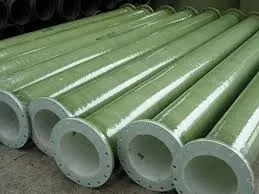
-
 Afrikaans
Afrikaans -
 Albanian
Albanian -
 Amharic
Amharic -
 Arabic
Arabic -
 Armenian
Armenian -
 Azerbaijani
Azerbaijani -
 Basque
Basque -
 Belarusian
Belarusian -
 Bengali
Bengali -
 Bosnian
Bosnian -
 Bulgarian
Bulgarian -
 Catalan
Catalan -
 Cebuano
Cebuano -
 China
China -
 China (Taiwan)
China (Taiwan) -
 Corsican
Corsican -
 Croatian
Croatian -
 Czech
Czech -
 Danish
Danish -
 Dutch
Dutch -
 English
English -
 Esperanto
Esperanto -
 Estonian
Estonian -
 Finnish
Finnish -
 French
French -
 Frisian
Frisian -
 Galician
Galician -
 Georgian
Georgian -
 German
German -
 Greek
Greek -
 Gujarati
Gujarati -
 Haitian Creole
Haitian Creole -
 hausa
hausa -
 hawaiian
hawaiian -
 Hebrew
Hebrew -
 Hindi
Hindi -
 Miao
Miao -
 Hungarian
Hungarian -
 Icelandic
Icelandic -
 igbo
igbo -
 Indonesian
Indonesian -
 irish
irish -
 Italian
Italian -
 Japanese
Japanese -
 Javanese
Javanese -
 Kannada
Kannada -
 kazakh
kazakh -
 Khmer
Khmer -
 Rwandese
Rwandese -
 Korean
Korean -
 Kurdish
Kurdish -
 Kyrgyz
Kyrgyz -
 Lao
Lao -
 Latin
Latin -
 Latvian
Latvian -
 Lithuanian
Lithuanian -
 Luxembourgish
Luxembourgish -
 Macedonian
Macedonian -
 Malgashi
Malgashi -
 Malay
Malay -
 Malayalam
Malayalam -
 Maltese
Maltese -
 Maori
Maori -
 Marathi
Marathi -
 Mongolian
Mongolian -
 Myanmar
Myanmar -
 Nepali
Nepali -
 Norwegian
Norwegian -
 Norwegian
Norwegian -
 Occitan
Occitan -
 Pashto
Pashto -
 Persian
Persian -
 Polish
Polish -
 Portuguese
Portuguese -
 Punjabi
Punjabi -
 Romanian
Romanian -
 Russian
Russian -
 Samoan
Samoan -
 Scottish Gaelic
Scottish Gaelic -
 Serbian
Serbian -
 Sesotho
Sesotho -
 Shona
Shona -
 Sindhi
Sindhi -
 Sinhala
Sinhala -
 Slovak
Slovak -
 Slovenian
Slovenian -
 Somali
Somali -
 Spanish
Spanish -
 Sundanese
Sundanese -
 Swahili
Swahili -
 Swedish
Swedish -
 Tagalog
Tagalog -
 Tajik
Tajik -
 Tamil
Tamil -
 Tatar
Tatar -
 Telugu
Telugu -
 Thai
Thai -
 Turkish
Turkish -
 Turkmen
Turkmen -
 Ukrainian
Ukrainian -
 Urdu
Urdu -
 Uighur
Uighur -
 Uzbek
Uzbek -
 Vietnamese
Vietnamese -
 Welsh
Welsh -
 Bantu
Bantu -
 Yiddish
Yiddish -
 Yoruba
Yoruba -
 Zulu
Zulu
frp pipeline
Understanding FRP Pipeline Technology An Overview
The evolution of pipeline technology has been crucial in various industries, particularly in the transportation of fluids and gases. One notable advancement is the introduction of Fiber-Reinforced Plastic (FRP) pipelines. These innovative structures are gaining popularity due to their various advantages over traditional materials.
Understanding FRP Pipeline Technology An Overview
One of the primary benefits of FRP pipelines is their lightweight nature. The reduced weight allows for easier handling and installation, which can significantly lower substructure costs and labor requirements. Furthermore, the lightweight advantage extends to transportation, where lower shipping costs can be realized compared to heavier materials. This characteristic also enables their use in applications where traditional materials cannot be easily installed due to weight constraints.
frp pipeline

Another compelling aspect of FRP pipelines is their long lifespan. Due to their resistance to environmental factors and chemicals, these pipelines require less maintenance over time, translating to lower operational costs. The longevity of FRP systems can often exceed several decades, which makes them a dependable solution for utilities looking to minimize replacement and repair frequency.
Moreover, FRP pipelines are highly customizable. They can be manufactured in various diameters, lengths, and configurations to meet the specific needs of a project. This adaptability is particularly beneficial in industries such as oil and gas, water treatment, and chemical processing, where unique operational requirements must be met.
Challenges exist with the use of FRP pipelines, predominantly concerning the initial investment cost. While the upfront expenditure may be higher compared to traditional materials, the long-term savings associated with maintenance and longevity often justify the initial expenditure. Additionally, the installation process can demand skilled labor familiar with composite materials, which may not always be readily available.
In conclusion, FRP pipeline technology represents a significant advancement in the field of piping systems. Its high strength, resistance to corrosion, lightweight construction, and long lifespan provide compelling reasons for industries to consider this option as a sustainable and efficient solution for fluid and gas transportation. As more sectors recognize the benefits of FRP, its adoption will likely continue to grow, paving the way for future innovations in pipeline technology.
Latest news
-
Exploring the Benefits of Top Hammer Drifter Rods for Enhanced Drilling PerformanceNewsJun.10,2025
-
High-Precision Fiberglass Winding Machine for GRP/FRP Pipe Production – Reliable & Efficient SolutionsNewsJun.10,2025
-
FRP Pipes & Fittings for Shipbuilding - Corrosion-Resistant & LightweightNewsJun.09,2025
-
Premium FRP Flooring Solutions Durable & Slip-ResistantNewsJun.09,2025
-
Premium Fiberglass Rectangular Tanks Durable & Lightweight SolutionNewsJun.09,2025
-
Tapered Drill String Design Guide Durable Performance & UsesNewsJun.09,2025









